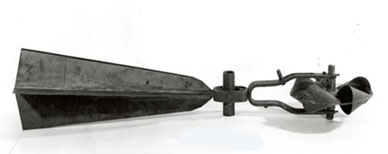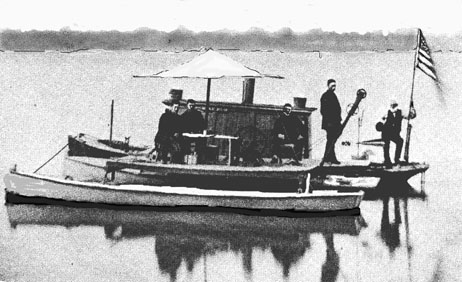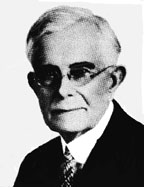What a Corps Civilian, Water Current Meters, and Apple Sorters Have In Common
 |
| The original Price current meter built by him and three mechanics at Paducah, Kentucky, 1882. |
Current meters provide river velocity (in feet per second) and discharge (in cubic feet per second). Crude meters resembling paddle wheels can be traced back hundreds of years, but in Nineteenth Century United States, current meters achieved a new importance and required greater accuracy. Economic growth and geographic expansion gave rise to calls for increased waterpower in the East, irrigation in the West, and improved navigation throughout the country. Public health—how much garbage can a river safely carry?—led to demands for more data about river flows. By the end of the century, flood control also became a concern. Correctly designed dams, spillways, levees, irrigation ditches, culverts, or bridges depended upon reliable current meters giving accurate river velocity and discharge readings.
Counting the revolutions of paddle wheels over a designated time and then multiplying by the circumference was one method of measuring river velocity. Other methods included everything from measuring the rate at which staves (rods), weighted at one end, moved to measuring how rapidly an apple flowed from one point in the river to another. Beginning with the work of Joseph Saxton in the 1830s, the modern current meter emerged. It evolved into an apparatus that seemed like a cross between a weather vane and an anemometer. Under the supervision of Topographical Engineer Captain Andrew A. Humphreys, a civilian-military team surveying the lower Mississippi in the 1850s developed a new double-float system to measure river currents. It employed a weighted wooden keg, its top and bottom removed, tied to a barrel that floated on the surface. Soon after the Civil War, Corps employees such as Daniel Farrand Henry on the Great Lakes, and Theodore G. Ellis on the Connecticut River, considerably improved the early meters. Henry is usually credited with producing the first telegraphic current meter. An electrical contact occurred during each revolution of the meter cups. An operator either used headphones to count the clicks or employed an instrument that automatically totaled the electrical impulses. The velocity of water flow was calculated by multiplying the number of clicks during a designated time interval by a "meter factor" unique to each machine.
Others made their own contributions to current meter development, but probably the most significant modification occurred on the Ohio River in the vicinity of Paducah, Kentucky, in the early 1880s. William Gunn Price, a young surveyor in the employ of the Mississippi River Commission (established by Congress in 1879 and headed by an Army Engineer officer), used double floats, staves, and an Ellis meter to determine discharge, carefully comparing results. He became dissatisfied with all three types. Double floats did not give an accurate reading at mid-depth level; rod floats were often even less accurate. Finally, the Ellis meter did not work well in the Ohio and Mississippi rivers because particles of sand would interfere with the electrical contact and would ruin the bearings of the apparatus.
 |
|
 |
| William G. Price (second from right) aboard the catamaran used to measure the flow of the Ohio River at Paducah, Kentucky, 1882. Note his current meter (by right leg of man with flag). |
|
William Gunn Price |
Consequently, Price—a born tinkerer "not much interested in school," who had learned engineering on the job— designed his own meter and employed a tinsmith, locksmith, and blacksmith to help him build it. Tests showed that its chief innovation, inverted cup bearings, excluded the sand and grit, just as Price had predicted.
The meter's superiority was such that Price claimed to his supervisor, an Army Engineer officer, "If the meter is a good machine and in the hands of a careful observer, I think it cannot fail to give correct results, while the methods with floats have been in use for a long time, and have been carried to as great perfection as possible, yet do not give perfect results." Price received a patent on his meter and continued to work for the Mississippi River Commission until 1896. By the early Twentieth Century, his meter had become the preferred instrument of the U.S. Geological Survey. Eventually, it became the most popular stream-flow gauge worldwide. Price's inventive genius extended to many other projects once he left the Mississippi River Commission. His inventions included the street car fare box, a new heavy-duty snow plow for clearing railroad tracks, a new "power brake" system, motor trucks, and, yes, machines to sort and box apples.
Source of photographs: Arthur H. Frazier, Water Current Meters in the Smithsonian Collections of the National Museum of History and Technology (now the National Museum of American History), (Washington, D.C.: Smithsonian Institution Press, 1974), pp. 78-80.
* * *
February 2001